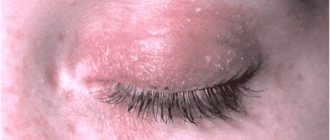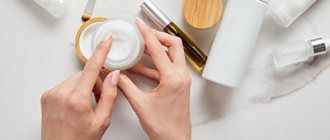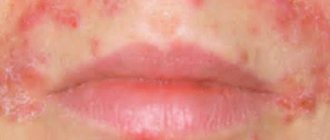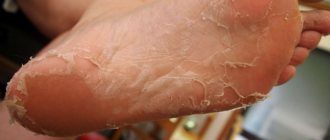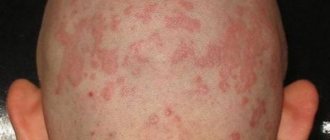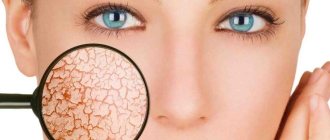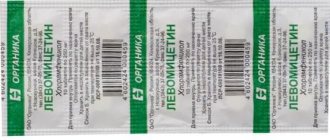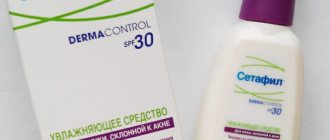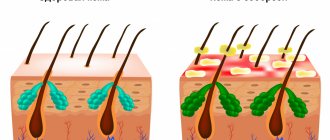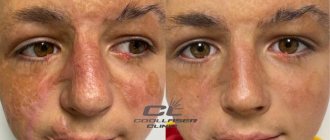You do your best to take care of your skin, but there will always be times when things go wrong and you end up with a nasty problem. Redness around the nose is a skin problem that most often occurs in the winter when your skin is already dry or chapped, but it can also happen at other times of the year. In some cases, you can add a little extra concealer, but it's always best to identify the root cause of the problem and address it.
If you notice that the skin around your nose is red, know that this is happening for a reason. Your skin reacts to your diet, your environment, and your skin care routine in ways you cannot predict. Before you apply another layer of foundation or concealer, ask yourself why your skin is red and see if you can find a way to solve the problem.
In this article we will look at the topic of redness around the nose in more detail. We'll talk about what causes it and how to reduce redness. You'll also see our top picks for professional Yon-Ka Paris to reduce redness around the nose.
What causes redness around the nose?
Your skin is the largest organ in the body and is designed to protect you from the environment. However, as your body's first line of defense, your skin takes a beating, and sometimes it shows. Redness around the nose is often a sign that your skin is deteriorating.
Redness around the nose is more likely to develop in winter, when your skin is dry and slightly cracked.
Other causes of redness include the following:
- Rosacea is a chronic skin condition that causes redness. Rosacea, unfortunately, has no cure. However, there are certain methods and medications that can reduce the redness caused by rosacea.
- Pimples (acne) - can cause the skin around your nose to become red and inflamed, especially if you keep picking at it. It's best to apply an acne treatment and leave the pimple alone.
- Perioral dermatitis is a type of rash that forms around the mouth and nose, often as a side effect of topical steroid creams.
- Skin allergies – If you are allergic to things like artificial fragrances or certain skin care products, redness around your nose could be a sign of an allergic reaction.
- Temperature changes - going from cold to hot weather outdoors can cause your skin to flush. Redness around the nose can also be caused by windburn.
- Skin irritation - sometimes the skin around your nose will become red if you rub or scratch it - this can also happen when you have a cold and are blowing your nose frequently.
Apart from these reasons, redness around the nose can also be the result of broken capillaries. Capillaries are very small blood vessels that can be affected by a number of factors, including temperature changes, hormones, sun exposure and even alcohol consumption. If you're still unsure what's causing the redness around your nose, talk to your doctor or dermatologist so they can examine and diagnose the redness.
Dry mucous membranes: symptoms
A healthy person secretes about half a liter of mucus every day, which moisturizes the nasal cavity and paranasal sinuses. If less mucus is produced, the mucous membrane dries out. The first symptoms of the disease are itching, burning and other unpleasant sensations in the nasal cavity, which you want to get rid of quickly. Subsequently, these symptoms may spread to the throat.
A person does not leave the feeling of stuffiness even in the absence of a runny nose. This symptom is especially annoying at night. Severe congestion causes snoring.
Another characteristic symptom is loss of smell. The patient ceases to distinguish odors. This symptom occurs due to the fact that the olfactory receptors cannot fully function without the proper level of hydration of the mucous membrane. This condition is called anosmia.
The disease very often occurs with the formation of crusts in the nasal cavity. So, in one of the varieties of chronic rhinitis (ozena disease), crusts are one of the main symptoms.
When these crusts come off, the nasal cavity begins to emit a very unpleasant odor, noticeable to others. Therefore, it is not surprising that the patient is trying with all his might to eliminate severe nasal dryness by starting treatment.
There are many blood vessels located near the surface of the mucous membrane, so the formation of crusts leads to frequent nosebleeds, which can be eliminated by eliminating severe dryness.
The skin of the nose also dries out, and cracks appear on its border. Due to the fact that normal nasal breathing becomes impossible, the brain is not saturated with oxygen, as a result of which the patient suffers from frequent headaches.
This condition, of course, greatly reduces the quality of life, and the patient cannot wait to get rid of it as quickly as possible.
It is imperative to treat the nasal mucosa, since constantly dry mucosa and the lack of proper treatment can provoke a number of complications, which will be much more difficult to get rid of.
Simple Tips to Reduce Redness
The best treatment for redness around the nose is one that addresses the underlying cause. If you're experiencing redness and inflammation but you haven't yet identified the exact cause, you may still have some idea of what's going on.
To quickly reduce redness and inflammation, try one of these methods:
- For redness caused by skin irritation (windburn, sunburn, or dryness), apply a hypoallergenic, non-comedogenic moisturizer.
- For redness caused by acne, rosacea and other skin conditions, try a moisturizer designed to treat these specific conditions. Make sure it's suitable for your skin type so you don't make the situation worse.
If applying a topical moisturizer isn't enough to soothe inflamed and irritated skin, you may need to take it one step further. Talk to your doctor or dermatologist about your concerns and any additional symptoms you notice. Providing your doctor with as much information as possible is the only way to make an accurate diagnosis so your doctor can recommend the appropriate form of treatment.
Here are some additional tips you can try to reduce inflammation and redness:
- Use a humidifier at night to prevent your skin from becoming too dry while you sleep.
- Apply a cold compress to relieve inflammation around the nose.
- Apply some hydrocortisone to reduce swelling and redness.
- Use an LED lamp to treat redness caused by rosacea and dermatitis.
- Switch to tissue moisturizing if you are struggling with a cold or runny nose.
- Take a probiotic daily to combat harmful bacteria that may be affecting your skin.
- Try yoga or meditation to combat chronic stress.
If you're not sure what's causing the redness around your nose, you may need to try a few of our tips before you find a solution that works. In the meantime, don't use any harsh skin care products or heavy makeup, and avoid anything that isn't labeled as non-comedogenic (won't clog your pores).
What happens if the disease is not treated?
Dryness itself as a symptom is not dangerous. But if the disease is not treated, the symptom will progress and can provoke a number of diseases and unpleasant manifestations.
We have already mentioned constant headaches. If the disease is not treated and dryness is not eliminated, the patient does not get enough sleep, becomes irritable, feels depressed and overwhelmed.
If the disease is not treated, a person temporarily loses the ability to distinguish odors.
The overdried mucous membrane, covered with microcracks, is most susceptible to the harmful effects of infectious agents; accordingly, people increasingly suffer from viral diseases.
If you do not try to get rid of the annoying symptom and do not begin to treat this condition in a timely manner, the mucous membrane may begin to thin out, which will lead to its atrophy. And this, in turn, will cause damage to the nasal bones.
A feeling of dryness in the nasal cavity is not as harmless a symptom as it might seem at first. Therefore, the question is: “How to get rid of severe dry nose?” quite relevant.
How to Avoid Worsening Skin Redness
When treating the underlying cause of your redness, there are irritants that you should avoid to avoid making the situation worse. For example, you may want to avoid wearing makeup for a few days to give your skin time to recover—you may also want to avoid direct sunlight and extreme temperatures.
Here are some other irritants you should avoid to help reduce redness around the nose:
- Alcohol, caffeine and spicy foods, which make blood vessels more visible
- Some skin care ingredients, such as alcohol
- Artificial fragrances and other additives that may irritate the skin
- Rough fabrics or fabrics that can damage or irritate the skin
If you want to reduce redness, it's important to give your skin time to recover and keep it hydrated. If you need a little extra help there are a number of skin care products you can try.
Fight against peeling
In an attempt to hide traces of peeling, many scrape off the scales, thereby injuring the young skin underneath. The correct option would be: thoroughly steam the skin and clean it with a scrub, then apply a mask with a high fat content, and only then can you remove the soaked scales.
When contacting a dermatologist, you will need to study hormonal levels and blood tests, after which you will need to strictly adhere to a hypoallergenic diet, use a vitamin-mineral complex, Laennec therapy, antibacterial and antimicrobial drugs, and in difficult cases, you will need to use hormonal ointments.
Recommended Yon-Ka Paris Products to Reduce Skin Redness
When shopping for skin care products to reduce redness around your nose, you should know your skin type. Choosing the wrong products for your skin type can make your skin too dry or too oily - this can also cause acne, which can make your redness worse.
Here are some of the best Yon-Ka Paris products to help you reduce redness:
- Sensitive Masque - With key ingredients like arnica and chamomile extracts, this soothing mask is designed for sensitive skin, while natural botanicals soothe inflammation and irritation to soothe your skin. Apply 1 to 3 times a week after cleansing and leave on for 60 minutes before gently patting and applying the remaining mask to skin.
- Creme Peaux Sensibilies - A soothing cream that boosts the skin's natural defenses and combats both physical and environmental triggers responsible for redness. It contains pre- and probiotics to nourish and repair skin, providing immediate and long-lasting relief to damaged skin. Apply to face and neck in the morning and/or evening.
- Gommage Yon-Ka Exfoliator - Exfoliates skin and reduces redness, use this gentle exfoliating and brightening gel 1 to 3 times a week after cleansing. It has a 4-in-1 formula enhanced with carob and brown algae extracts and essential oils to tighten pores and firm skin, leaving your skin hydrated, soothed and radiant.
Identifying the underlying cause of facial redness is the first step in treating it, but there are Yonka skin care products that can help you along the way.
Causes of dry nose
There are external and internal causes of dry nasal mucosa and decreased mucus production. External ones include the following:
- unfavorable climate: low air humidity, low outside temperature and the associated beginning of the heating season;
- lack of regular ventilation of the room;
- harmful working conditions: work in a hot shop, polluted or dusty room, cement plant, etc.;
- smoking, including passive smoking.
Possible internal causes of dry nose:
- taking certain medications: hormonal local sprays, allergy medications, vasoconstrictor drops, medications with atropine;
- diseases of the nose and paranasal sinuses: atrophic rhinitis, deviated nasal septum, etc.;
- endocrine diseases: diabetes mellitus, thyroid disorders, etc.;
- allergic diseases;
- systemic diseases: for example, scleroma, which affects the upper respiratory tract.
Seborrheic dermatitis
Seborrheic dermatitis is characterized by the appearance of dandruff on the scalp and its spread to the area around the nose and mouth. According to statistics, men are most affected by this disease.
The cause of the development of the pathological process is a yeast fungus of the genus Malassezia, which is an opportunistic microorganism present on the epidermis of every person.
Photos with symptoms of seborrheic dermatitis
Under the influence of a number of factors, pathogenic microorganisms multiply, as a result of which the process of skin renewal accelerates and inflammation develops.
The vital activity of the microorganism is associated with the composition of the secretion produced by the sebaceous glands.
Seborrheic dermatitis is an inflammatory disease, the symptoms of which appear in areas of the body with a large number of sebaceous glands. This is the head, the area behind the ears, the nasolabial triangle, the chest and the area between the shoulder blades.
Symptoms
The inflammatory response caused by a fungal infection is accompanied by the destruction of epidermal cells, causing the skin to peel and itch. At the initial stage of seborrheic dermatitis, in certain areas of the skin, yellowish blisters and spots appear, which can form large scaly plaques. In most cases, the affected areas are located symmetrically.
Seborrheic dermatitis is similar to allergies, psoriasis and eczema. Regardless of the severity of the manifestations, its symptoms are identical: first the scalp is affected, then the ears and eyebrows, and only then other parts of the face or body.
In severe and advanced cases, the crusts begin to peel off and the skin becomes very itchy.
There are three forms of seborrheic dermatitis:
- Dry . Secretory secretions are reduced. Teenagers are most often affected by the disease.
- Fat . Characterized by the formation of thick skin secretion.
- Mixed . The pathology is complicated by acne, and both oily and dry plaques are observed on the affected areas.
Treatment
Treatment of seborrheic dermatitis comes down to normalizing metabolic processes in the body, weakening the activity of skin microflora, eliminating psychological discomfort and relieving the main symptoms.
An important component of treatment is a diet that involves limiting fatty, fried, spicy foods, sweets and smoked foods. To facilitate digestion, it is also advisable to take enzymes.
It is possible to cope with the symptoms of seborrheic dermatitis with the help of hormonal medications available in the form of ointments, aerosols and creams. The most common of them are: Akriderm, hydrocortisone ointment, Advantan, Fluorocort. With their help, you can relieve inflammation, itching, eliminate dryness and flaking of the skin, and also moisturize it.
The full course of systemic treatment includes vitamin therapy and the use of drugs with an antimicrobial spectrum of action. These measures can improve the condition of the skin and speed up metabolic processes. Seborrheic dermatitis can be treated at home.
